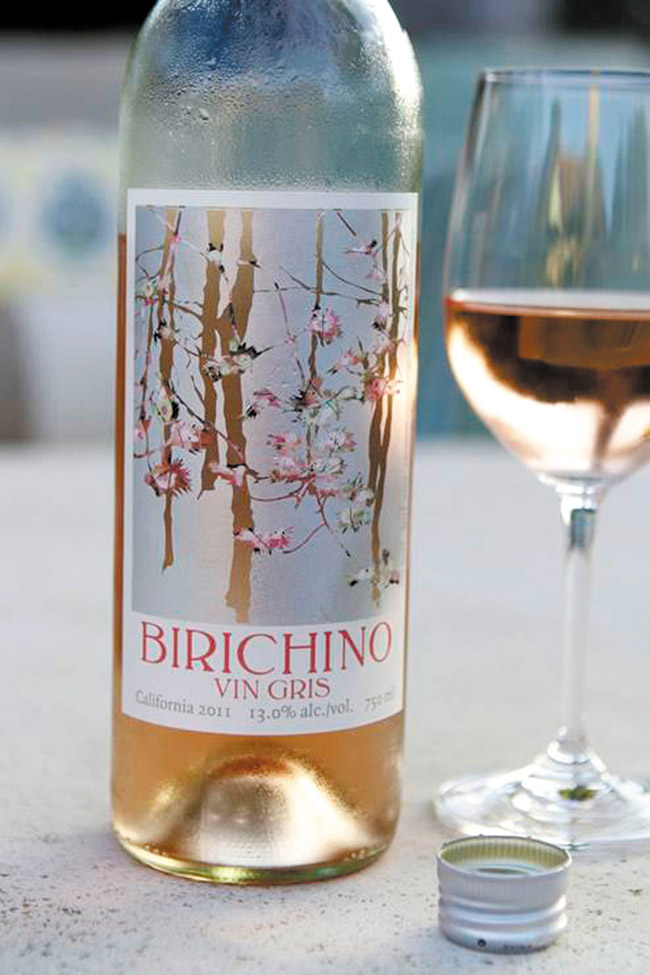It’s Time To Spring For A Nice Dry Rosé
Spring is on its way. For some areas of the U.S., it cannot come soon enough. The season is traditionally a time of renewal: the blossoming of new flowers and new life. The wine world also welcomes spring with new wines.
This is the time of dry Rosé.
With the harvest done and wines already finished with their fermentations, the first wine of the new harvest is always the Rosé. These wines are “bled” from short contact with the skins of red grapes and separated from them quickly. This is known as the saignee method of winemaking. It began as a byproduct of the red wine-making process, as some winemakers used this method to concentrate the colors, flavors and structure of the red wine by “bleeding” off some of the juice, which ultimately made a Rosé. Rosé also can be made by blending white wine with red wine, but this technique is less common in dry Rosé wines. It is used mostly in the production of Rosé sparkling wines such as Champagne.
Dry Rosé is big time now. Producers all over the world are working as quickly as they can to get their dry Rosé out for a market thirsty for its flavor. What is so interesting about dry Rosé is that it can be made (almost literally) from any red grape. From Mourvedre to Pinot Noir, Blaufrankisch to Nebbiolo, Zinfandel to Xynomavro, winemakers can make Rosé from it. Some work better than others, obviously, and there are several keys to making great Rosé.
The best Rosé is made intentionally. Rosé is not a “side” endeavor or a byproduct of another mission. Some of the top Rosé producers in my book all grow grapes in specific vineyards and from specific varieties that are destined for dry Rosé production. These grapes even are harvested at a different time than the grapes destined for red wines, typically earlier. This is to retain freshness and acidity, as well as to avoid the unwanted tannin that would develop later in maturation. Freshness cannot be remedied in the winery, so the grapes and the juice must have that balance lest the resulting wine become fat and clumsy.
The best Rosé is made intentionally. Rosé is not a ‘side’ endeavor or a byproduct of another mission.
The aging of Rosé also is integral to its character. Most Rosé is made for consumption within a year of its release. There are rare occasions where the producer may want to produce a Rosé that is age-worthy. It is fun to taste older dry Rosé wines — in fact, the geek in me loves to taste them. But the hedonistic side of me and my palate definitely prefer the Rosé as fresh as the bloom of a rose. So, to that end, I prefer Rosé that does not have any overlay of new wood. Stainless steel keeps the wine fresh and retains a lot of its fruity aromas/flavors. Cement curves and even the very fashionable concrete “eggs” give the wine a more developed flavor and complexity. Older oak barrels of varying sizes give the wine an even more developed flavor, but can risk some oxidative quality and even loss of color because of its contact with oxygen. Depending on the winemaker’s approach, a mix of these can be quite successful.
A beautiful dry Rosé is one of the joys of drinking wine. I always have likened it to a ray of sunlight in a glass. It is can be as refreshing as a white wine, have the added complexity of red fruit and is so versatile with food. This spring, make it a point to drink a dry Rosé. I would not be surprised if it makes you smile.
Recommendations (when they arrive): 2014 Whispering Angel ($22) Citrus, melons, nectarine and flowers fill the glass. It is light but not thin, and the freshness really makes it go down really easily. This is great with mussels, seafood pasta, especially clams, and a fresh salad with vinaigrette dressing. 2014 Birichino Vin Gris ($13) This is one of my favorite New World Rosés, period. It has everything I love in dry Rosé: great fruit, balance, freshness — and it is a fabulous bargain. Perfect for afternoon chat sessions with friends or just some “me” time. Food-wise, it shines with seafood, salads, light pastas and even goat cheese.
Roberto Viernes is a master sommelier.
rviernes@southernwine.com
Twitter: @Pinotpusher






